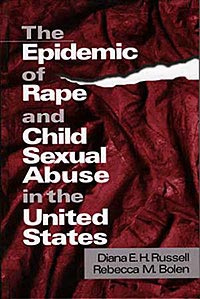 |
| Pathologize me? Call me a which and a bic'h, but FEMEN means no more patriarchy. |
It had been an idyllic day celebrating a cousin's wedding until Steve's wife turned to him during the reception and said she was having a panic attack.
The loud music in the room seemed to be engulfing her, heightening her anxiety. After the main course was served, Steve and his wife got up to go for a drive and get some air. To respect his wife's privacy, Steve did not tell anyone why they were leaving, including his half-sister, Klara, who was seated at their table.
Minutes after the two left the wedding, as Steve later learned, Klara started approaching family members to claim that Steve and his wife had stormed off over something she did -- and that they'd refused to tell her what she'd done wrong.
She marched from table to table sharing the story, adding more drama with each telling. She ended up in the ladies' room a few minutes later, sobbing, and it took Steve's mother, other sister, and several close friends to calm her down so she wouldn't disturb the festivities.
The loud music in the room seemed to be engulfing her, heightening her anxiety. After the main course was served, Steve and his wife got up to go for a drive and get some air. To respect his wife's privacy, Steve did not tell anyone why they were leaving, including his half-sister, Klara, who was seated at their table.
 |
| I'm wit stoopid. - And I loves him so much! |
She marched from table to table sharing the story, adding more drama with each telling. She ended up in the ladies' room a few minutes later, sobbing, and it took Steve's mother, other sister, and several close friends to calm her down so she wouldn't disturb the festivities.
While trying to help his wife through her panic attack, Steve had stopped paying attention to his cell phone. When he next looked at the screen, he faced a torrent of messages from Klara, each more indignant than the last:
"I deserve better... What the f*** is wrong with you?... I HATE YOU!... Never call me again; you're dead to me!" Steve still marvels at how quick Klara was to erupt in response to her perception of events. "Despite there being no argument, no unpleasant words exchanged," he says, "our absence was presumed to be a slight directed at her and her alone."
 |
| I didn't know I was sick. That's part of it. |
Klara's spontaneous emotional combustion at the wedding would probably seem totally unremarkable to the 14 million adults in the U.S. who are estimated to have borderline personality disorder (BPD). They make up 2 percent of the general population but 20 percent of psychiatric inpatients. Most are women, and they typically turn the ups and downs of everyday life into a roller-coaster ride of moods. In doing so, they don't just alienate others around them, they subvert their own life trajectory. Explosively reactive, and often struggling to get a grip on themselves, borderlines have difficulty maintaining stable relationships or even holding down a job. More
Why, why, why?
The roots of mental disorders and addiction-cravings (for self-soothing) are explained by Dr. Gabor Mate as early childhood trauma, which sets us up for a great deal of suffering and dysfunctional relationships and coping strategies. The answer? Don't add drama to the trauma. The first 20 minutes of "Zeitgeist: Moving Forward" explains it beautifully.
Don't think it's an "epidemic"? Just Diana Russell and Rebecca Bolen, who can answer in the abstract: This book is the long-awaited follow-up to Russell's landmark Sexual Exploitation. It examines the many -- and often conflicting -- findings of studies that have since been conducted on the incidence and prevalence of rape and child sexual abuse in the United States. The wide variation in prevalence rates obtained by these studies -- for example, rape rates ranging from 2.6% to 44% -- has led many hostile critics to attack the high rates as misleading and alarmist. More
Why, why, why?
 |
| The Epidemic...in the U.S. |
Don't think it's an "epidemic"? Just Diana Russell and Rebecca Bolen, who can answer in the abstract: This book is the long-awaited follow-up to Russell's landmark Sexual Exploitation. It examines the many -- and often conflicting -- findings of studies that have since been conducted on the incidence and prevalence of rape and child sexual abuse in the United States. The wide variation in prevalence rates obtained by these studies -- for example, rape rates ranging from 2.6% to 44% -- has led many hostile critics to attack the high rates as misleading and alarmist. More




















































































































































































































































No comments:
Post a Comment